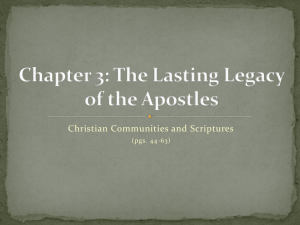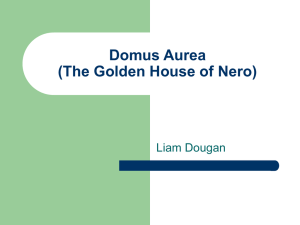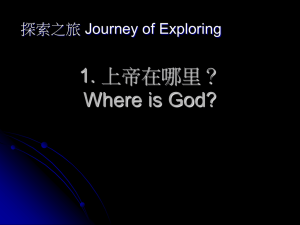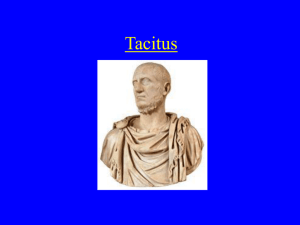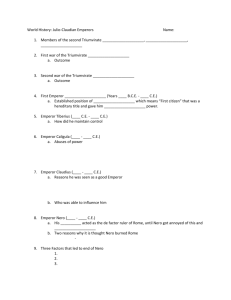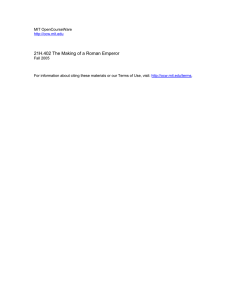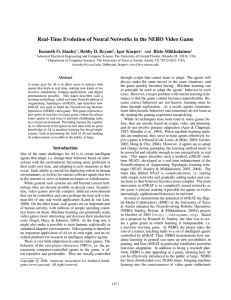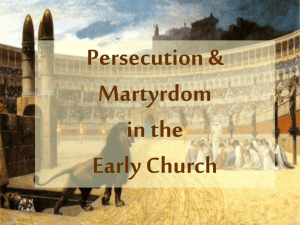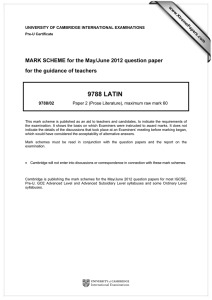Revelation Power Point
advertisement
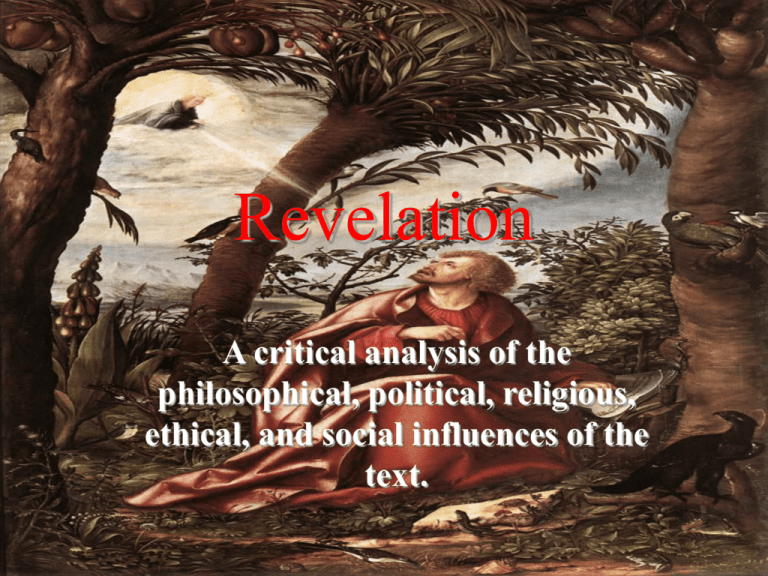
Revelation A critical analysis of the philosophical, political, religious, ethical, and social influences of the text. Historical Overview • John is in exile on the Island of Patmos assumed to be the apostle because no other Christian leader was more associated with the Asian churches. • Written in a time of severe persecution of Christians under Nero (AD 54-68) or Domitian (AD 81-96). In Gk., revelation means “apocalypse,” which suggests the unveiling of Christ. • On July, 19th, 64 CE, a fire started in Rome and burned for nine days, finally destroying or damaging almost threequarters of the city, including numerous public buildings. Rumors spread that the fire had been planned by Nero. And according to Tacitus, to put an end to such rumors, Nero creatred a diversion by torturing and executing Christians. • "Mockery of every sort was added to their deaths. Covered with the skins of beasts, they were torn by dogs and perished, or were nailed to crosses, or were doomed to the flames. These served to illuminate the night when daylight failed. Nero had thrown open the gardens for the spectacle, and was exhibiting a show in the circus, while he mingled with the people in the dress of a charioteer or drove about in a chariot. Hence, even for crimnals who deserved extreme and examplary punishment there arose a feeling of compassion; for it was not, as it seemed, for the public good, but glut one man's cruelty, that they were being punished." • Tacitus' Account of Nero's Persecution of Christians. Annals 15.44.2-8 (source: http://www.courses.drew.edu/sp2000/BIBS T189.001/Tacitus.html) Nero’s Persecution Apocalyptic Literature • Flourished during periods of foreign domination, beginning with the Babylonian exile (cf. Daniel and Ezekiel) • After the second Jewish revolt against Rome in AD 135, this form of literature began to decline, and eventually ceased after the 4th century • Main characteristics: 1. Claim to have been written by Biblical characters 2. Known by its use of vision and symbolism (often narrated or interpreted by an angelic figure); many patterns, numbers, symbols 3. Focused side by side on the movement of world history, especially related to the Jewish people and the coming Messiah • 4. Not just predicting the future, but fitting its development into a theological framework, that typically climaxed in messianic intervention on behalf of God Often dualistic (God v.Satan) and deterministic (history is determined in advance moving toward God’s ultimate victory) Literary Form • John refers to himself as a prophet and to this work as a piece of prophesy (1:2; 22:10,19) • Also has some features of a letter, or epistle (I.e., the greeting) • Overall instructional tone, designed to be read aloud in worship (1:3,11; 2:7,11,17,29; 3:6,13,22) • Over 500 allusions to OT, so perhaps key to unlocking meaning lies in understanding the OT. • Particularly distinguished by its use of hymns • Heavenly choruses of praise and worship are interspersed with visions, symbols, prophesy, sermonic exhortations, Scripture citations, narrative, prayer, and dialogue Structure I. II. III. IV. V. VI. VII. VIII. IX. X. XI. XII. Introduction (1:1-8) John’s Vision (1:9-20) The Seven Churches (2:1-3:22) God’s Sovereignty (4:1-5:14) The Seven Seals (6:1-8:5) The Seven Trumpets (8:6-11:19) The Dragon’s Persecution (12:1-13:18) A Summary (14:1-20) The Seven Cups (15:1-16:21) Fall of Babylon (17:1-18:24) Revelation of the Lamb (19:1-22:5) Conclusion (22:6-21) Theology/Theme • 1. 2. 3. 4. 5. 6. 7. Based on apostolic theology (the core religious doctrines taught by the apostles) Events accomplished by God are done in fulfillment of the Scriptures Jesus died and resurrected for salvation of the world This same Jesus is now exalted and sits at the right hand of God Faith in him is foundation of salvation God’s Spirit is poured out on his believers Believers are to fellowship and participate in worship and instruction Jesus will come again to judge the living and the dead Views of Revelation • Futurist: A Blueprint of End Times. • Historicist: The Road Map of World [or Church] History • Preterist: The First Century Church • Idealist: Eternal Principles Sources •Holman’s Concise Bible Dictionary •Internet image searches on www.google.com
